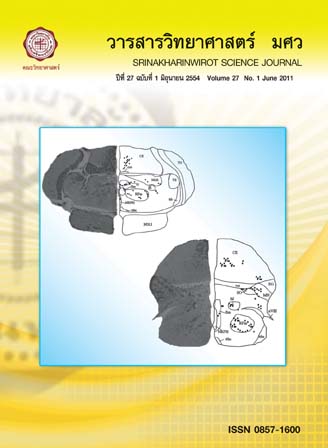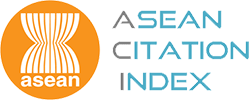โพลีเอมีนในพืชตอบสนองต่อสภาวะเครียดทางกายภาพที่หลากหลาย
Keywords:
โพลีเอมีน สภาวะเครียดทางกายภาพ พูทรีซีน สเปอร์มิดีน สเปอร์มีน polyamines, abiotic stresses, putrescine, spermidine, spermineAbstract
สภาวะเครียดทางกายภาพเป็นสาเหตุหลักซึ่งส่งผลให้พืชสูญเสียผลผลิตทั่วโลก บทความนี้จะมุ่งเน้นในบทบาทของสารกลุ่มโพลีเอมีนในการตอบสนอง และการปรับตัวของพืชต่อสภาวะเครียดทางกายภาพ โดยเฉพาะอย่างยิ่งความเครียดจากความเค็ม ความแห้งแล้ง ความเย็น การเกิดบาดแผล รังสียูวี และอนุมูลอิสระ สารกลุ่มโพลีเอมีน (พูทรีซีน สเปอร์มิดีน และสเปอร์มีน) นั้นเป็นสารประจุบวกที่มีมวลโมเลกุลต่ำ ซึ่งพบได้ในสิ่งมีชีวิตทุกชนิด ในช่วงระยะเวลาสิบปีที่ผ่านมามีงานวิจัยมากมายที่ได้ศึกษาเกี่ยวข้องกับการลอกรหัส และการเมแทบอลิซึมของสารกลุ่มโพลี-เอมีนจากพืชหลากหลายสายพันธุ์ภายใต้สภาวะเครียดทางกายภาพที่แตกต่างกัน ดังนั้นความเข้าใจถึงบทบาทและกลไกของการทำงานของสารกลุ่มโพลีเอมีนในการตอบสนองต่อสภาวะเครียดทางกายภาพ จึงน่าจะมีความเป็นไปได้ในการพัฒนาวิธีการสำหรับการเพิ่มการอยู่รอดของพืชในสภาวะเครียดทางกายภาพที่หลากหลายได้ Abiotic stresses are the major cause of various plant productivity losses in worldwide. This article will focus on the role of polyamines in plant responses and adaptation to abiotic stresses, especially salinity, drought, chilling, wounding, UV radiation and oxidative stresses. The polyamines (putrescine, spermidine and spermine) are low molecular weight cations that are found in all organisms. During the last decade, many research involved in polyamine transcription and metabolism have been studied from several plant species under different abiotic stress conditions. Therefore, a better understanding of the role and mechanism of polyamine actions in abiotic stress responses that may be possible to develop strategies for overcome and increase plant survival in many abiotic stress conditions.Downloads
Download data is not yet available.
Downloads
Published
2011-06-11
How to Cite
ชุติไพจิตร ส., & สมพรไพลิน ก. (2011). โพลีเอมีนในพืชตอบสนองต่อสภาวะเครียดทางกายภาพที่หลากหลาย. Science Essence Journal, 27(1). Retrieved from https://ejournals.swu.ac.th/index.php/sej/article/view/1455
Issue
Section
บทความวิชาการ








